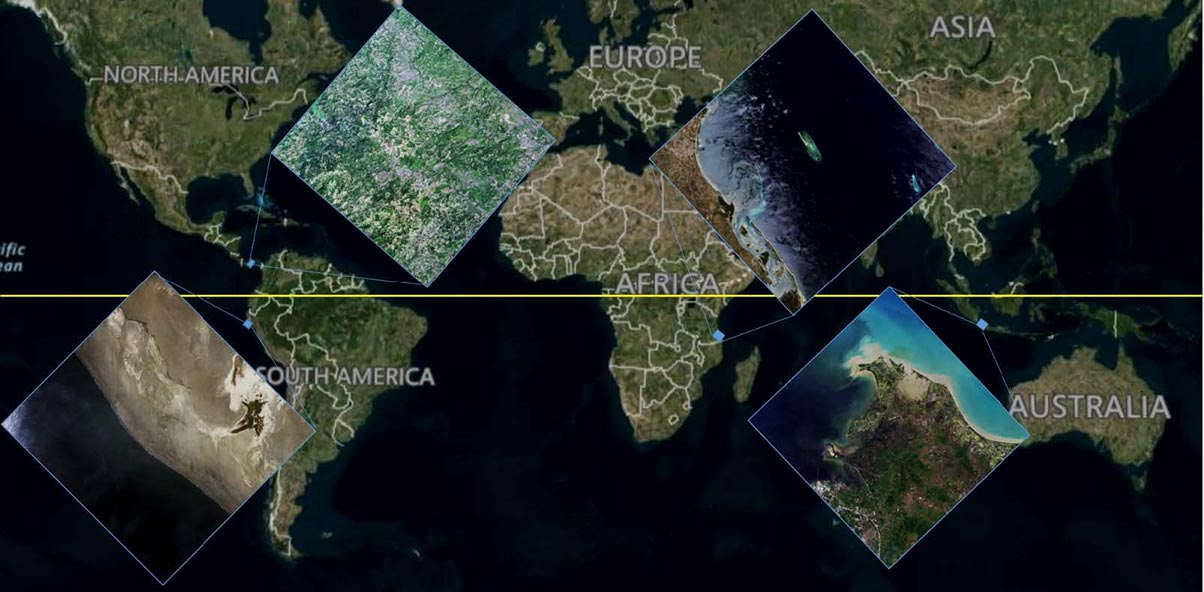Oil Spill Research
The DLR Earth Sensing Imaging Spectrometer (DESIS-30) is the first commercially available hyperspectral remote sensing camera in Low Earth Orbit (LEO).
Coverage of the spectral range from 400 to 1000 nm is acquired in 2.55 nm bins (235 bands), with a ground sampling distance of ~30 m. DESIS arrived on the International Space Station (ISS) on June 29th, and collected its first image on October 2, 2018. Testing of sensor calibration and data dissemination processes are ongoing and should be complete in early August 2019. As the pioneer system on Teledyne Brown Engineering’s (TBE) Multi User System for Earth Sensing (MUSES) platform on the ISS, DESIS has collected over 4.5 million square kilometers of hyperspectral data. MUSES provides directional pointing and onboard storage for the imager. The data from DESIS is then downlinked by the MUSES Operations Team at TBE’s Operations Center in Huntsville, AL and delivered to dedicated cloud processing and storage infrastructure for customer delivery and archiving.

Now that information is being delivered from the instrument, there are many unique applications for the DESIS data. There are numerous marine hazards that the imager can monitor and assist with disaster recovery. For instance, the National Oceanic and Atmospheric Administration (NOAA) maintains an incident archive of hazards being monitored. This archive includes thousands of different types of marine concerns such as oil spills/slicks, sunken ships leaking fuel or oil, large MUSES' HOSTED PAYLOAD: DESIS sea mammal carcasses, plastic rafts, fishing gear, gas releases, and debris. The ISS orbit provides increased opportunities for collecting data over tropical ocean zones, which are often obscured by clouds. This enhanced tropical, temporal coverage provides organizations like NOAA and the US Coast Guard more opportunities to detect, chart, monitor and mitigate oceanic hazards.
Last February, DESIS collected two scenes just southeast of the mouth of the Mississippi River, an area of considerable ship traffic as well as offshore drilling activities. In September of 2004 Taylor Energy’s Mississippi Canyon 20 (MC20) oil platform collapsed in this area. Since that time, crude oil has been leaking from the well site. This site has been monitored by satellite imagery, but the latest information collected has shown this site continues to discharge up to 4,500 gallons a day, much higher than initial estimates of 3-4 gallons per day.
Following conversations with the NOAA Hazard Mapping team, DESIS imagery was ordered and processed to confirm observation of the MC20 slick. Imagery from these scenes showed a distinctive sheen associated with surface oil. Oil on the surface often is composed of foamy bubbles from water agitation, which reflects strongly in the infrared. The color infrared composite below shows several reddish streaks. NOAA analysts believe these are from the Taylor Energy leak. TBE is in the process of delivering these images to NOAA to provide absolute confirmation.
Why Hyperspectral and Why DESIS
DESIS can be a valuable tool for mapping ocean hazards. The first is the ISS orbit which provides more opportunities for mid latitude coverage, this increased temporal access is especially important in frequently cloudy areas like the Gulf of Mexico. The second is the narrow bands allow for more precise mapping of hydrocarbons. In the spectral plot below, the oil has a distinct peak near 725nm and 950nm that the surrounding water does not have.
Using spectral processing techniques, it is easy to map the slick relative to the water. By searching for pixels that have a higher reflectance in the 725nm and 950nm bands relative to other pixels, a vector can be created that shows the slick extents at the date of February 2nd 2019. Ongoing imaging can show how the slick changes, and combined with sonar data, current modeling and other inputs, a volume of oil can be estimated.
